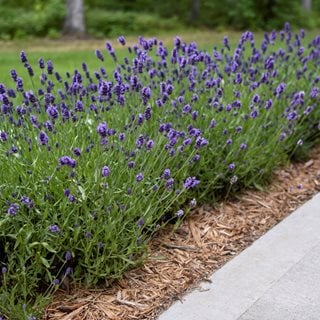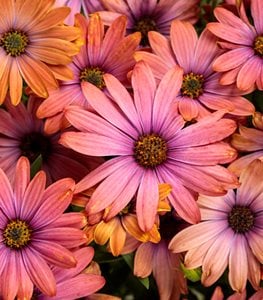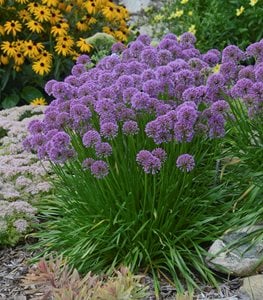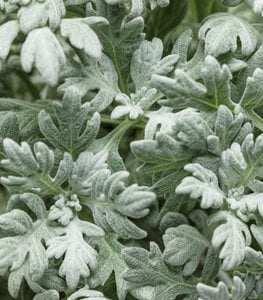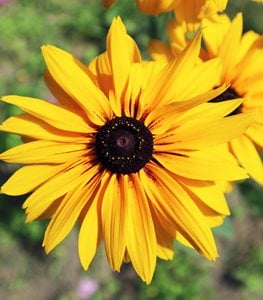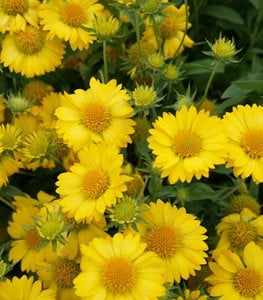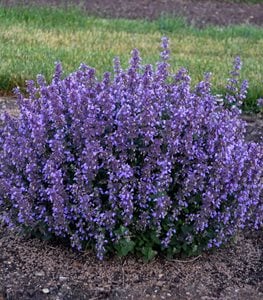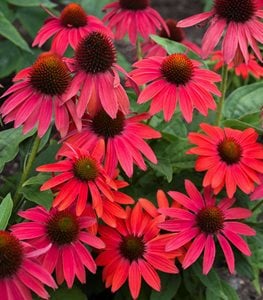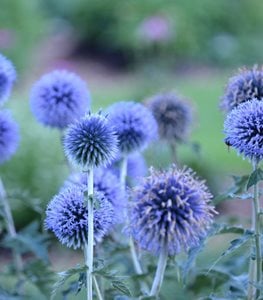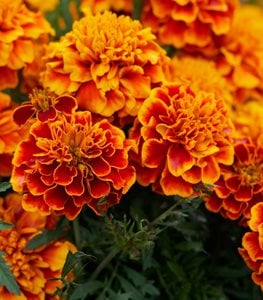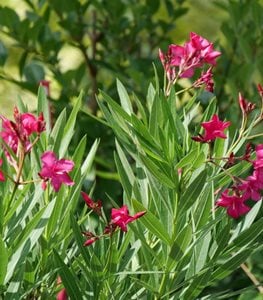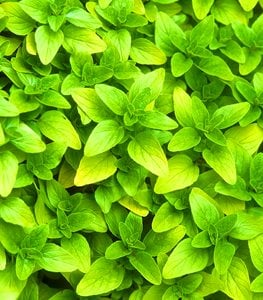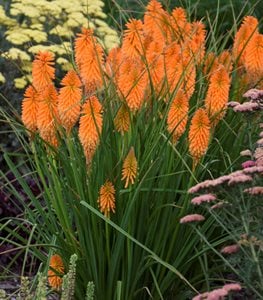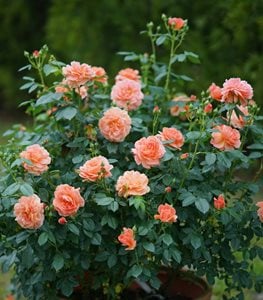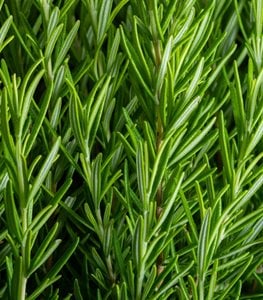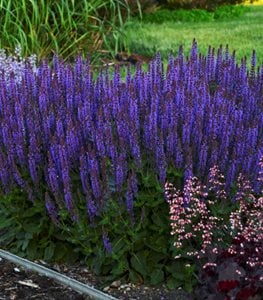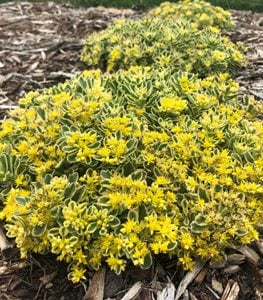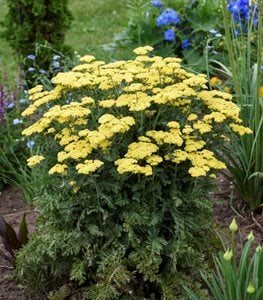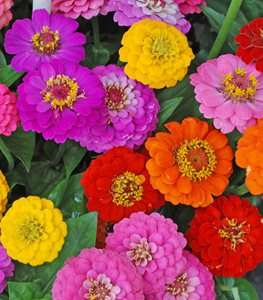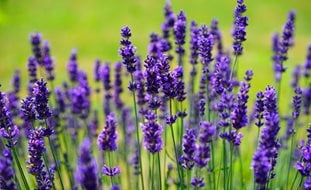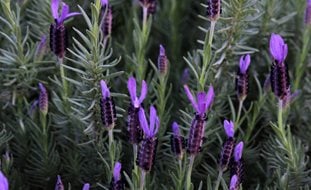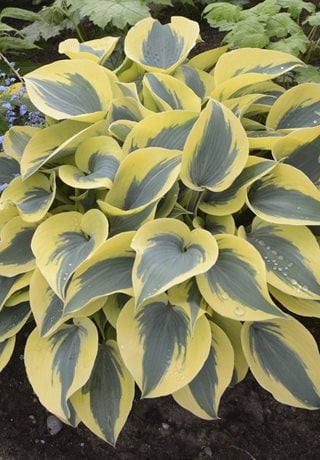What to Plant With Lavender: 18 Plants
Pair these plants with lavender for winning garden combinations.Lavender (Lavandula spp.) is one of the most popular garden plants, grown for its wide array of culinary, medicinal, and ornamental uses. This perennial herb produces aromatic gray-green foliage and slender flower spikes in shades of purple, lavender, blue, pink, or white. Lavender varieties vary in bloom time, from late spring through summer.
Native to the Mediterranean region, lavender is easy to grow when given the right conditions. Plants prefer full sun, lean, well-draining soil, and are drought tolerant once established. This shrubby plant adds structure, color, and fragrance to beds, borders, and containers.
Lavender is a versatile landscape plant, pairing well with many other ornamental plants in mixed borders, waterwise landscapes, curbside strips, herb, and kitchen gardens. Here’s what to plant with lavender and how to use these combinations in your yard.
LAVENDER COMPANION PLANTS
Companion plants have similar growing needs and complementary traits such as structure, texture, color, and shape that enhance the beauty of the combination. They may also provide benefits such as repelling harmful pests, reducing garden maintenance, or attracting pollinators. Here are some of the best companion plants to grow with lavender.
AFRICAN DAISY (Osteospermum spp.)
Zones: 9-11; most often grown as an annual
Exposure: Full sun to light shade
Habit: Upright bushy or trailing habit
Height/Spread: 1 to 3 feet tall, 1 to 2 feet wide
Bloom time: Late spring to frost
This tender perennial or annual produces oval green foliage and small daisy-like flowers in an array of colors, providing contrast to the spiky wands of lavender. Use African daisy in a garden bed as a filler or ground cover around lavender plants, or combine in containers. Learn more about growing African daisy.
Pictured: Bright Lights™ Horizon™ Sunset African daisy from Proven Winners.
ALLIUM (Allium spp.)
Zones: 4-10
Exposure: Full sun
Habit: Upright habit
Height/Spread: 6 to 48 inches tall, 3 to 10 inches wide, depending on the variety
Bloom time: Spring to summer
Allium is an onion relative grown from bulbs. The showy globe-shaped flowers contrast with the spiky shape of lavender blooms. The slender upright growth habit of allium is useful for filling in gaps around lavender plants. Combine together in mixed borders and waterwise landscapes. Learn more about growing allium plants.
Pictured: 'Millenium' allium.
ARTEMISIA (Artemisia spp.)
Zones: 3-9, depending on the variety, or grown as an annual
Exposure: Full sun
Habit: Upright, mounding or spreading habit
Height/Spread: 6 inches to 6 feet tall, 1 to 2 feet wide, depending on the variety
Bloom time: Summer to fall; flowers on many varieties are insignificant
Also known as mugwort, Artemisia is grown for the deeply lobed silvery foliage that adds background interest to the landscape. The soft feathery texture and subdued coloring complements the fine foliage and cool hues of lavender flowers. When paired with lavender, plant artemisia in a curbside strip or waterwise border. Learn more about growing artemisia.
Pictured: Silver Bullet® artemisia from Proven Winners.
BLACK-EYED SUSAN (Rudbeckia spp.)
Zones: 3-9
Exposure: Full sun
Habit: Upright habit
Height/Spread: 1 to 4 feet tall, 1 to 2 feet wide
Bloom time: Summer to early fall
Black-eyed Susan is the quintessential late summer perennial, with golden daisy-like flowers. The sunny coloring and cone-shaped blooms add a pop of contrast when paired with the blue or purple flowers of lavender. When growing lavender and black-eyed Susan together, place along a foundation, in mixed borders or mass plantings. Learn more about growing black-eyed Susan.
Pictured: 'Double Gold' black-eyed Susan.
BLANKET FLOWER (Gaillardia spp.)
Zones: 3-10, depending on the variety
Exposure: Full sun
Habit: Upright, mounding, or spreading habit
Height/Spread: 1 to 3 feet tall, 1 to 2 feet wide
Bloom time: Late spring through fall
Daisy-like flowers in bold hues of red, orange, and yellow contrast with the cool tones of spiky lavender wands for a compelling effect. Blanket flower and lavender bloom throughout summer for a long-lasting combination in mixed borders and waterwise strips. Learn more about growing blanket flower.
Pictured: Heat it Up® Yellow gaillardia from Proven Winners.
CATMINT (Nepeta spp.)
Zones: 3-9
Exposure: Full sun to partial shade
Habit: Mounding or spreading habit
Height/Spread: 1 to 3 feet tall and wide
Bloom time: Late spring to fall
Catmint is similar in appearance to lavender but is more cold hardy. This tough herbaceous perennial plant is more tolerant of different soils and drought conditions than lavender. Combine this complementary pair in a low-maintenance border or curbside strip. Learn more about growing catmint.
Pictured: 'Cat's Pajamas' catmint from Proven Winners.
CONEFLOWER (Echinacea spp.)
Zones: 3-9
Exposure: Full sun
Habit: Upright spreading habit
Height/Spread: 1 to 5 feet tall, 1 to 2 feet wide
Bloom time: Summer
Also known as echinacea, this prairie native is one of the best companion plants for lavender. Dark pink cone-shaped flowers contrast with the subdued hues and spiky form of lavender blooms. Newer hybrids come in a range of other colors. Coneflower and lavender bloom around the same time, offering long-lasting summer color to waterwise borders and garden beds. Learn more about growing coneflower.
Pictured: Summersong™ Firefinch™ coneflower from Proven Winners.
GLOBE THISTLE (Echinops spp.)
Zones: 3-9
Exposure: Full sun
Habit: Upright branching habit
Height/Spread: 2 to 5 feet tall, 1 to 3 feet wide
Bloom time: Summer
Globe thistle is grown for the steely blue globe-shaped flowers that bloom from mid-summer to early fall. The thistle-like gray-green foliage and rounded flower shape pair well with lavender’s ornamental attributes, lending structure and contrast to beds and borders. Combine with lavender in a curbside strip or waterwise border.
MARIGOLD (Tagetes spp.)
Zones: Grown as an annual
Exposure: Full sun
Habit: Upright or compact mounding habit
Height/Spread: 6 to 48 inches tall, 6 to 24 inches wide
Bloom time: Late spring to frost
The brightly colored yellow, orange, or red flowers of marigolds complement the cooler hues of lavender blooms. Plants thrive in similar growing conditions of full sun and well-draining soil. Grow marigold and lavender together in a kitchen or herb garden to repel pests. Learn more about growing marigold flowers.
OLEANDER (Nerium oleander)
Zones: 8-11
Exposure: Full sun
Habit: Upright bushy habit
Height/Spread: 4 to 20 feet tall, 3 to 15 feet wide
Bloom time: Year-round, with peak bloom during warmer months
A common landscape plant in warmer climates, oleander blooms year-round and tolerates heat, drought, and poor soil. The funnel-shaped flowers contrast with lavender’s spiky blooms for a pleasing effect. Pair oleander with lavender to extend the bloom season in a waterwise strip or mass planting, allowing plenty of room to avoid crowding. Use caution when planting oleander as all parts of the plant are highly toxic. Learn more about growing oleander.
Pictured: Austin Pretty Limits® oleander from Proven Winners.
OREGANO (Origanum spp.)
Zones: 4-10, depending on the variety
Exposure: Full sun to partial shade
Habit: Upright, spreading, or trailing habit
Height/Spread: 6 to 36 inches tall, 8 to 24 inches wide
Bloom time: Summer to fall, depending on variety
Oregano is a common culinary herb with tiny flowers that attract bees and other insect pollinators, helping to pollina food crops. Pair oregano with lavender in an herb or kitchen garden. Creeping or spreading forms of oregano can be grown as edging, in rockeries, or as an understory plant to lavender.
RED HOT POKER (Kniphofia spp.)
Zones: 5-9
Exposure: Full sun
Habit: Upright clumping habit
Height/Spread: 2 to 6 feet tall, 1 to 3 feet wide
Bloom time: Early summer to fall, depending on variety
Kniphofia produces torch-like flower spikes on stately stems, adding exotic mid to late season appeal to beds and mixed borders. This South African native prefers similar growing conditions to lavender and is virtually trouble-free. Use as a structural focal point to contrast with lavender’s shrubby appearance. Learn more about growing red hot poker plants.
Pictured: Pyromania® 'Orange Blaze' red hot poker from Proven Winners.
ROSE (Rosa spp.)
Zones: 2-11
Exposure: Full sun to partial shade
Habit: Upright, bushy, spreading, arching, or climbing habit
Height/Spread: 6 inches to 30 feet tall, 1 to 15 feet wide
Bloom time: Late spring to fall
Lavender and roses are classic garden companions, pairing well in formal English-style landscapes and cottage-style borders. Shrub and floribunda roses are the best types to plant near lavender. Roses require more water and richer soil than lavender, so allow space between plants to accommodate the different cultivation needs. Learn more about growing roses.
Pictured: At Last® rose from Proven Winners.
ROSEMARY (Salvia rosmarinus)
Zones: 8-11, some hardy to Zones 6-7 with winter protection
Exposure: Full sun
Habit: Upright, bushy, mounding or spreading ground cover habit
Height/Spread: 2 to 6 feet tall and wide, depending on the variety
Bloom time: Late winter to fall, depending on the variety
This perennial herb is native to the same region as lavender, though rosemary is less hardy. Both have similar physical traits with a bushy habit, short spiky leaves and pastel-hued flowers. Rosemary blooms at different times of the year, extending the flowering season. Plant rosemary alongside lavender in a mixed border or use as hedging. The flavors of lavender and rosemary pair well together in many culinary dishes. Learn more about growing rosemary.
SALVIA (Salvia spp.)
Zones: 4-12
Exposure: Full sun
Habit: Upright spreading habit
Height/Spread: 1 to 5 feet tall, 1 to 6 feet wide
Bloom time: Late winter to fall, depending on the variety
The tubular flowers of sage plants are widely variable in color, shape, and bloom time, adding contrast and extending the flowering season when combined with lavender. Plant culinary sage with lavender in your herb garden or vegetable plot. The flavor of sage and lavender blend well together in many beverage and main dish recipes. Learn more about growing salvia.
Pictured: Color Spires® 'Violet Riot' salvia from Proven Winners.
SEDUM (Sedum spp.)
Zones: 3-11
Exposure: Full sun to partial shade
Habit: Upright, creeping, or trailing habit
Height/Spread: 3 to 36 inches tall, 12 to 24 inches wide
Bloom time: Summer to fall
Also known as stonecrop, Sedum is a succulent plant with fleshy foliage and clusters of star-shaped flowers in various colors. Flowers occur from summer into fall, extending the bloom season after lavender plants have finished blooming. Place sedums in between lavender plants in a rock garden or waterwise strip. Learn more about growing different types of sedum.
Pictured: Rock 'N Low® 'Boogie Woogie' sedum from Proven Winners.
YARROW (Achillea spp.)
Zones: 3-9
Exposure: Full sun
Habit: Upright spreading habit
Height/Spread: 1 to 4 feet tall, 2 to 3 feet wide
Bloom time: Summer to early fall
The flat-topped red, pink, yellow, or white flower clusters of Achillea provide contrast to the pastel flower spikes of lavender. This tough perennial thrives in lean, well-draining soil and dry conditions. Plant yarrow together with lavender in a mixed border or waterwise strip. Learn more about growing yarrow.
Pictured: 'Firefly Sunshine' yarrow from Proven Winners.
ZINNIA (Zinnia spp.)
Zones: 10-12, most often grown as an annual
Exposure: Full sun
Habit: Upright or compact bushy
Height/Spread: 6 to 48 inches feet tall, 6 to 36 inches wide
Bloom time: Summer to frost
Zinnia is a warm season annual with cheerful flowers in an array of colors including red, orange, pink, yellow, purple, and white. The vibrant warm hues and rounded daisy-like shape of zinnia flowers contrast with the cool pastel tones and spiky shape of lavender blooms. Mass zinnias together with lavender in a garden bed or curbside strip. Learn more about growing zinnias.
WHAT NOT TO PLANT WITH LAVENDER
Not all plants pair well with lavender. Here are some combinations to avoid:
- Mint requires rich, evenly moist soil and will not thrive next to lavender.
- Camellia has different growing needs than lavender, preferring partial shade and regular water.
- Hosta needs partial to full shade in order to thrive. The attractive foliage can burn when placed in the full sun conditions that lavender requires.
- Impatiens require partial to full shade, rich soil and moist conditions, making them incompatible with lavender.
- Fuchsia prefers rich soil, partial shade and moist conditions, which is different from lavender growing needs.
Is lavender a good companion plant for vegetables?
Lavender attracts pollinators, assisting in crop pollination. It also repels pests that can harm food crops, particularly brassicas such as broccoli, cabbage, and cauliflower. Because lavender plants require less water and leaner soil than most vegetables, plant them in pots or adjacent beds where they can be cared for separately.
